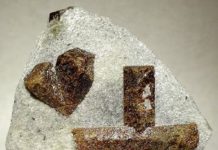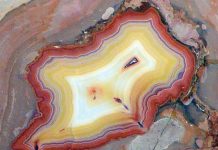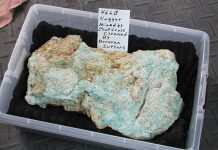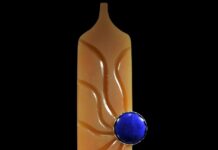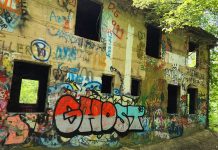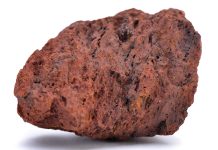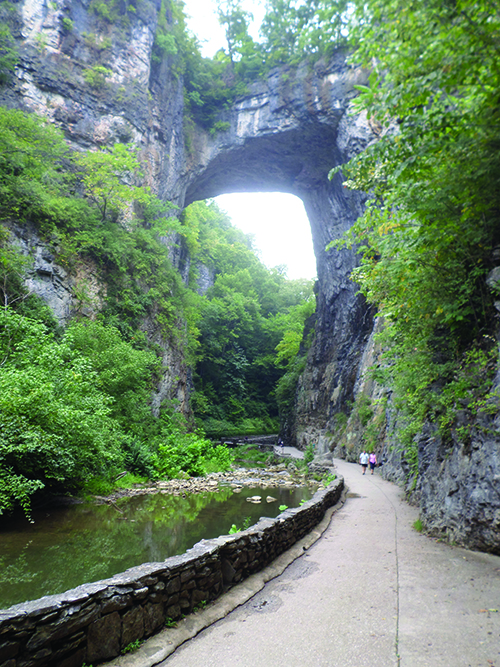
Editor’s Note: This is part one of a two-part series about the Natural Bridge of Virginia. Be sure to enjoy Part II>>>
By Deborah Painter
During the era of the 1700s when North American colonies were under British rule, a certain intelligent and educated man by the name of Thomas Jefferson heard of a remarkable natural arch in west central Virginia, southwest of his Charlottesville home. He purchased acres of land surrounding the stone arch from King George III for twenty shillings. Since Jefferson bought this land in the year 1774, two short years before his penning of the Declaration of Independence, it was a well-timed sale. The future third President of the United States was immensely interested in both architecture and natural history and showed his understanding of both in his description: “….. the arch approaches the semi-elliptical form, but the larger axis of the ellipsis, which would be the cord of the arch, is many times longer than the transverse.”
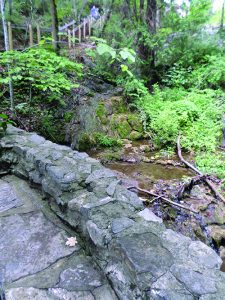
Cedar Creek runs beneath the Natural Bridge of Virginia, which at one point was considered an original Natural Wonders of the modern world. The creek flows through a gorge. Native Americans of the Monacan tribe had for many thousands of years camped beneath Virginia’s Natural Bridge during hunting expeditions and made use of Cedar Creek’s water. They, as well as the game they hunted, also found the bridge itself useful as a crossing. The game trail later became part of a stage road that crossed the span. Rockbridge County derives its name from this famous feature.
Early visitors were awestruck by how this towering dolostone and limestone arch resembles a bridge built by human hands. It is approximately 215 feet in height from the top of its arch to the trail below and 90 feet from end to end. Americans of European descent were generally unfamiliar with natural stone arches in the 1700s and early 1800s and did not know of the thousands of natural shrink-swell created sandstone arches in what is now known as Arches National Park in Utah. In the Victorian era, the Natural Bridge was further promoted by an 1835 painting by Jacob Caleb Ward. Today, it is displayed at the Nelson Atkins Museum in Kansas City, Missouri. The Pennsylvania Railroad used this painting as its logo for many years.
EXAMINING THE GEOLOGY OF THE STORIED ARCH
Why are there so few limestone or dolomite spans of similar nature and appearance worldwide? The answer is to be found in the karst geology of the Natural Bridge area. The Appalachian Valley (known locally as the Shenandoah Valley) is unusually narrow in the area near Natural Bridge and the City of Lexington. The valley is Cambrian and Ordovician in age, sedimentary rocks that were folded and thrust faulted. Karst topography characterizes the Natural Bridge area. Near the Natural Bridge and Natural Bridge Station is Short Hill, a small hill that is a textbook example of a synclinal mountain.
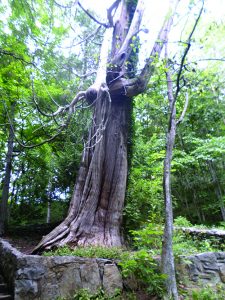
The Natural Bridge itself is composed of two sedimentary rock formations: massively bedded, dense light gray arenaceous dolomite (dolostone) of the Beekmantown Formation of Ordovician age and dark blue limestones of the Chepultepec Formation, also of Ordovician age (Spencer, et al, 2007). These are all marine clastics.
Cedar Creek is believed to have begun as an above-ground stream less than one million years ago. It is entrenched at its mouth at the James River near Gilmore Mills for roughly 3.97 miles upstream of the River to Red Mills near the Bridge. In his 1968 paper on Rockbridge County geology, geologist Edgar W. Spencer of Washington and Lee University built his hypothesis of the formation of the span upon earlier hypotheses promoted by H. P. Woodward in 1936 and by F. J. Wright in 1934. Woodward and Wright stated that the stream known today as Cedar Creek was part of the karst system of underground rivers, capturing water from Poague Run two miles to the north, contributing to the larger drainage basin.
The creek’s larger flow helped to form the present-day gorge or small canyon, significantly increasing the distance from the bottom of the water flow to the roof of the underground channel. Extensive faulting characterizes the bedrock here. Over a period of perhaps 500,000 or more years, the cave ceiling above that underground river collapsed bit by bit due to faulting, erosion, and weathering, then ultimately disappeared.
REMNANT OF A CAVE FORMATION
Spencer’s, Woodward’s, and Wright’s hypothesis for the existence of the Natural Bridge is the accepted one today. As they stated, the Bridge is the sole remnant of that cave roof and still stands due to the strength afforded it as the midpoint of a syncline. Today, the “Lost River”, about one-half mile upstream from the Natural Bridge, is an example of an underground stream supporting the hypothesis of the underground river. Water from the side of the gorge flows into the Cedar Creek, much as the ancestral Cedar Creek underground river allegedly flowed into Cascade Creek that flows parallel to Cedar Creek. A small section of the rock between Cedar Creek and the bedrock of the gorge was blasted away along the visitors’ trail so that one can hear the underground river rushing along, mostly out of sight.
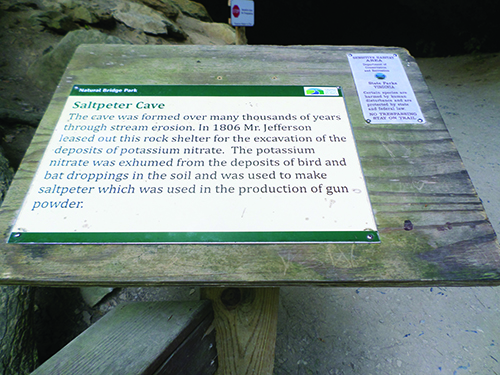
The various owners of the Bridge after Jefferson no longer owned it established a hotel, later to be named the Natural Bridge Hotel, to accommodate the many visitors who traveled to see this sight. The owners preserved many natural heritage resources along the streambank trail leading to Lace Falls. One such resource is a cave where bat guano was harvested hundreds of years ago to make saltpeter, a component of gunpowder. This was a source of income for Thomas Jefferson from his investment. Several extremely old specimens of arbor vitae (Thuja occidentalis), also known as eastern white cedar, gave the creek its name and still provide shade along the steps leading from the modern visitors center to the trail.
These individual trees are up to 700 years old. A dead trunk has been preserved in situ; the tree died in 1980 at the age of approximately 1,600 years. Decades ago, the owners built a concrete footpath from the top of the gorge down past the trees to the gorge, and a stone wall separates the visitors from the creek along portions of the 0.9-mile-long trail where the grade is steep. Interesting features near the span along the gorge are fossil moss being formed in the open as calcite-laden water flows almost constantly over the moss, the aforementioned saltpeter cave and lost river, younger specimens of arbor vitae, and riffle and pool complexes and small rapids and falls at various points along the trail, providing prime habitat for a variety of fish and invertebrates. At the end of the trail is a 29.5-foot-tall cascade known as Lace Falls.
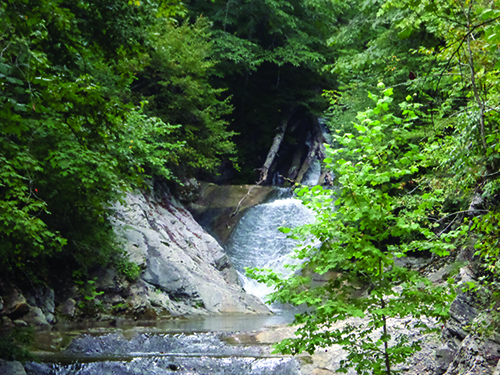
For more information about the modern-day efforts to preserve this special locality, read Part II, “Revived Interest Shines on the Natural Bridge of Virginia.”
To learn more or to plan for a trip to this fascinating natural destination, visit https://www.dcr.virginia.gov/state-parks/natural-bridge.
If you enjoyed what you’ve read here we invite you to consider signing up for the FREE Rock & Gem weekly newsletter. Learn more>>>
In addition, we invite you to consider subscribing to Rock & Gem magazine. The cost for a one-year U.S. subscription (12 issues) is $29.95. Learn more >>>


 Hide i
Hide i